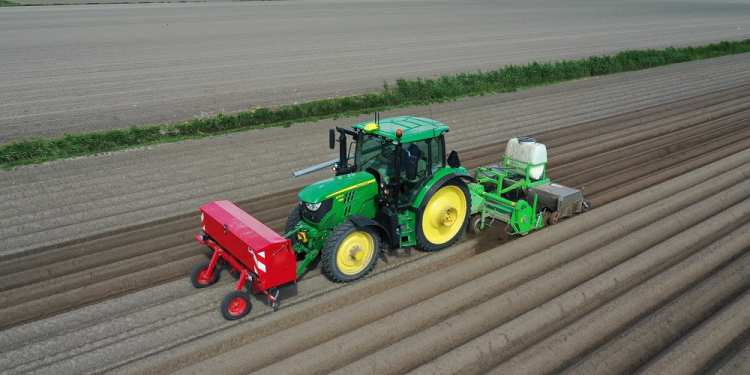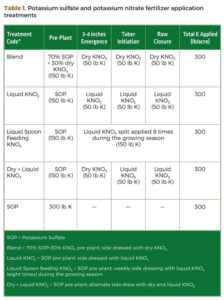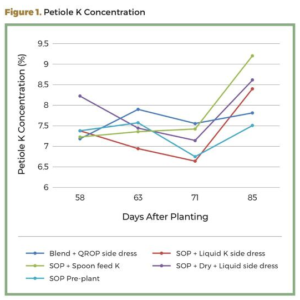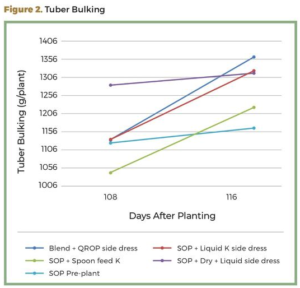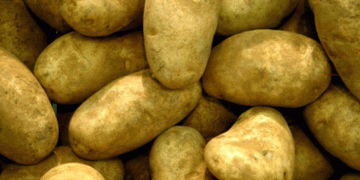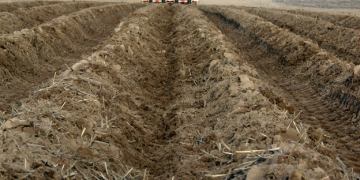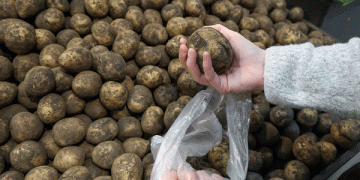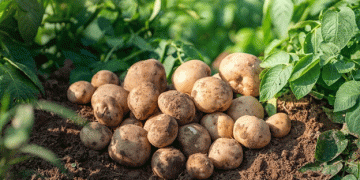Potato plants absorb large quantities of potassium (K) throughout the growing season. It is therefore important that K availability to the plant is not limiting.
Potassium Chloride (KCl) and Potassium Sulfate (K2SO4) are the most common source of potassium fertilizer used in potato production in Colorado. Both sources are applied pre-plant as dry formulations. Potassium Nitrate (KNO3) can be applied as dry or liquid fertilizer. It provides readily soluble and quickly absorbed K in comparison to KCl or K2SO4 as source of K fertilizer.
These characteristics make KNO3 very effective in side dressing applications during early crop growth. The research question was: Will side dressing potatoes with KNO3 fertilizer improve plant K uptake and tuber performance in the field?
Experimental procedure
The field study was conducted at Colorado State University’s San Luis Valley Research Center. Cultivar Canela Russet was evaluated for its response to side dressing with KNO3 fertilizer. The study was laid out as a randomized complete block design (RCBD) with each treatment replicated three times. Potassium Sulfate was applied pre-plant in this study before side dressing with liquid or dry KNO3 fertilizer. Treatment arrangements are indicated in Table 1.
Results
Petiole K concentration. Petiole K concentration increased during the growing season when potatoes were side dressed with KNO3 fertilizer. This observation was more pronounced 71 days after planting (DAP), indicating improved K uptake after side dressing with KNO3, compared to potato plants that did not receive any side dressing (Figure 1).
Tuber bulking. Side dressing potatoes with liquid or dry KNO3 fertilizer up to row closure did improve early tuber bulking compared to side dressing with liquid KNO3 fertilizer throughout most of the growing season (liquid spoon feeding KNO3) – (Figure 2). Pre-plant application of SOP with no KNO3 fertilizer side dressing showed slower tuber bulking rate from 108 to 116 DAP.
Tuber yield and tuber size distribution. Side dressing potato plants with KNO3 fertilizer did influence tuber yield and tuber size distribution of Canela Russet (Table 2). With the exception of the treatment that involved frequent in-season side dressing with liquid KNO3 (liquid spoon feeding KNO3), all treatments that involved side dressing with liquid or dry KNO3 fertilizer up to row closure did increase total, marketable (> 4 ounces), premium size (> 6 ounces), and medium size tuber yield, compared to potato plants that did not receive any side dressing with KNO3 fertilizer (Table 2). Alternate side dressing with dry and liquid KNO3 fertilizer up to row closure did increase total and marketable (> 4 oz) tuber yield by 28% and 32%, respectively, when compared to pre-plant application of SOP with no KNO3 fertilizer side dressing (Table 2).
Summary potassium nitrate fertilizer
Results obtained from this study clearly indicate that side dressing russet potato cultivar ‘Canela Russet’ with KNO3 fertilizer, up to row closure helps increase K uptake throughout the growing season, enhance early tuber bulking, and increases tuber yield. Frequent side dressing with liquid KNO3 fertilizer throughout the growing season is not recommended.
— Samuel YC Essah, Ph.D., is an associate professor and state Extension specialist in Colorado State University’s Department of Horticulture and Landscape Architecture. He is based at CSU’s San Luis Valley Research Center.
